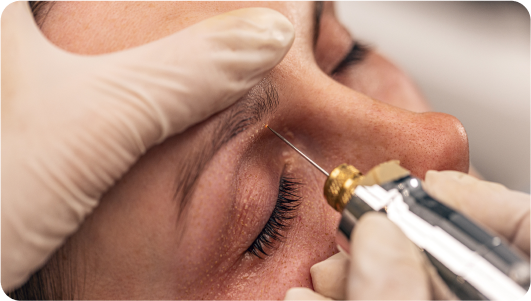Fibroblast Treatment
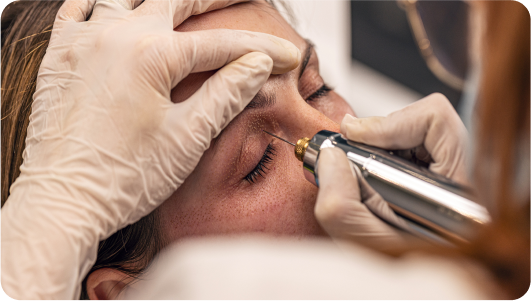
Fibroblast helps skin wounds heal as well as maintaining skin firmness and tightness.
Plasma fibroblast therapy uses a pen-like device that discharges a high-frequency electric current to small areas of the skin.
The plasma tip doesn’t directly touch the skin, but instead releases a targeted current just above the skin. The hot current creates small holes, or micro-injuries, in the skin’s layer.
The thermal disruption, or heat damage, from plasma fibroblast therapy:
- breaks down proteins in the skin
- encourages tissue regeneration
- stimulates fibroblast activity
- causes tissue contraction (tightening)
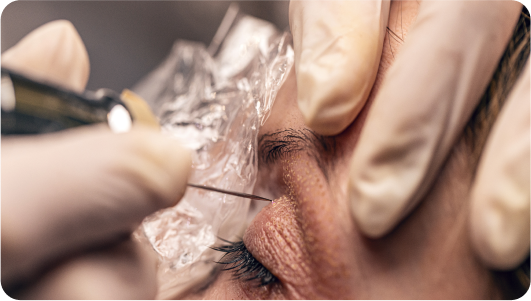
What are the benefits of fibroblast therapy?
Plasma fibroblast therapy is a nonsurgical treatment that may be used to treat the following conditions:
- acne
- photo aging, including age spots
- seborrheic keratosis
- wrinkled skin, including the eyelids, neck, jawline, and above the lips
Cosmetic specialists may also use plasma fibroblast therapy as an alternative to lip fillers to make the lips look fuller.
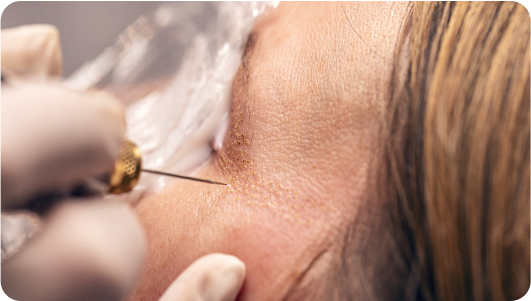
Does it work?
When plasma fibroblast therapy is performed in a safe, controlled environment, it can:
- improve skin texture
- offer mild-to-moderate skin tightening effects
- result in some degree of skin facial contour change
According to a 2014 article published in the journal Clinical, Cosmetic and Investigational Dermatology, the effects are expected to stimulate fibroblast production for up to 1 year after treatment.
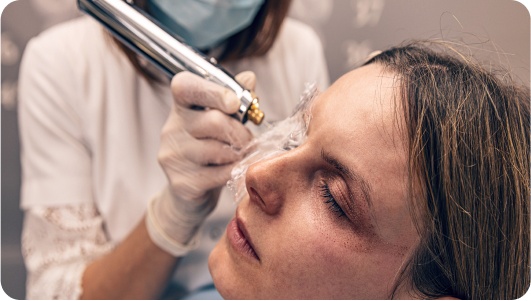
What’s the procedure like?
While the procedure may vary slightly based on where you’re having the treatment, the basic steps typically include:
- Cleansing the skin and applying a topical anesthetic (numbing) cream. You may need to wait about 30 minutes for the numbing cream to take effect.
- Treating the designated skin area with the plasma pen. The pen will create small arcs of microcurrents that make small scab-like dots on the skin.
- A professional will remove the numbing cream and apply a cooling gel to minimize the tingling and burning sensation whenever possible.
The procedure usually takes about 30 to 60 minutes to perform.
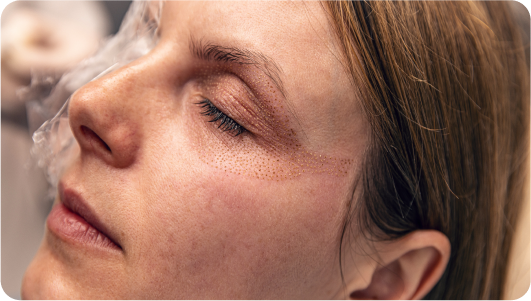
Recovery
Once the procedure is completed, you can expect the small dots to scab over and fall off after about 1 week. Over the next couple of weeks, as your skin heals, it should appear tighter and firmer. Some people may see benefits from one treatment, while others may require three treatments before they see results.
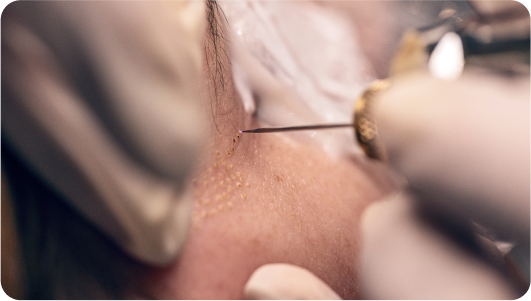
Who’s a good candidate?
The best candidates for this procedure are people with mild-to-moderate skin wrinkling concerns.
You shouldn’t receive plasma fibroblast therapy if you:
You shouldn’t receive plasma fibroblast therapy if you:
- are breastfeeding
- are pregnant
- have an allergy to topical anesthetic preparations
- have an infection at the treatment site
- are using isotretinoin for wrinkles or acne

